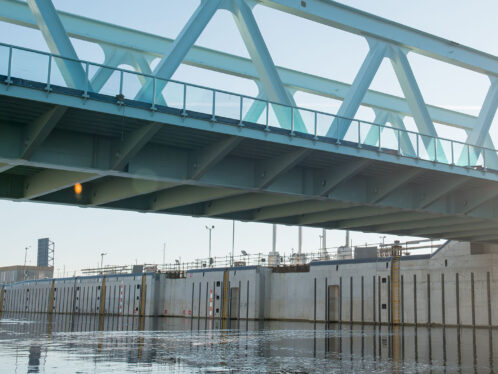Ernest Moniz – Focused on efficiency
Is there a solution to the world’s conflicting interests of growing energy demands and the need for reduced carbon emissions? According to Ernest Moniz, director of MIT’s Energy Initiative, there is. The key is efficiency.
Is there a solution to the world’s conflicting interests of growing energy demands and the need for reduced carbon emissions? According to Ernest Moniz, director of MIT’s Energy Initiative, there is. The key is efficiency.
Ernest Moniz, an energy expertat the Massachusetts Institute of Technology (MIT) in the United States, is the kind of scientist who sees the big picture. And the big picture is daunting.
How will the world supply energy to billions more people, meet the growing electricity demand in China and other developing countries and yet not dramatic-ally increase carbon dioxide emissions?
Moniz, a former US undersecretary of energy during the Clinton administration, from 1997 to 2001, is a realist. He believes the world will need to intelligently combine all its energy resources to meet the demand, including nuclear power, coal, natural gas and renew-ables such as wind and solar energy. Yet, at the same time, he does not dismiss the possibility that technical whizzes somewhere on the planet – perhaps even among his own students – will discover a radically new solution.
In the meantime, his top priority is efficiency. By increasing energy efficiency, he says, “you win all across the board.” Moniz joined the faculty of MIT, which is based in Cambridge, Massachusetts, in 1973, specializing in theoretical nuclear physics. Having shifted his focus to energy policy and technology, he now serves as director of MIT’s Laboratory for Energy and the Environment as well as director of its Energy Initiative.
Efficiency satisfies thethree requirements for all energy solutions, he says: meeting legitimate development needs, protecting national security interests and – very important to Moniz – preserving the environment.
In terms of industry response, Moniz believes businesses should start by making their buildings and pro-cesses more efficient. Building efficiency is, he says, “the low-hanging fruit.” In the US, for example, commercial and residential buildings account for 70 percent of the country’s total electricity demand. Other commercial areas that could reap major energy savings include industrial processes, recycling and remanufacturing.
In searching for real-world energy solutions, Moniz serves on corporate advisory councils for various energy and national security companies. He is also deeply interested in public policy.
Turning to the global energy future, Moniz speaks in terms of terawatts. A terawatt is a rate of energy use representing one trillion watts of electricity-generating power. Currently, the world consumes 14 terawatts, or 14 million megawatts.
Now, what happens when, as many predict, the world population reaches 9 billion from the current 6.7 billion? What happens when India and China raise their standards of living closer to European levels? What happens when world energy use doubles? It’s enough to make your head spin.
In 2003, Moniz wasa lead author of The Future of Nuclear Power, an MIT report on the feasibility of increasing nuclear power capacity in the US. Since then, he has had a reputation as a promoter of nuclear power, which does not emit carbon dioxide into the atmosphere. But Moniz bristles at the suggestion that he is pushing the nuclear option. He says he is looking at every potential energy source the world has available, adding, “I have no horses in this race.”
Besides, he says, nuclear power alone cannot begin to meet the world’s energy demand. Today, the world’s nuclear power capacity is about one-third of a terawatt, out of the total 14 terawatts. Even if there’s a renaissance in nuclear power, Moniz says, by 2050 the maximum power production he can imagine would only reach one terawatt.
Coal may be a higher priority, says Moniz. Coal is both cheap and abundant, with the US, China and India all holding huge reserves. In a single year, China increased its coal-fired energy production by one-tenth of a terawatt. Last spring, MIT published a second report in its energy series, The Future of Coal, in which Moniz and his MIT co-authors promote the use of carbon capture and sequestration to prevent coal from accelerating global warming. “We’ve got to get control of the coal issue,” says Moniz.
Next in its energy series, MIT plans to publish a report on solar power. Solar energy has tremendous long-term potential, Moniz says, because the sun beams hundreds of terawatts onto the earth. Yet, we remain very inefficient at capturing that energy in a cost-effect-ive way, and technological breakthroughs are needed.
Moniz is optimisticabout the potential for technology to address the world’s energy challenges. He is less optimistic, however, that humans will summon the political will to change their energy consumption
habits. Although he is not apocalyptic about the future, he believes people will need to make “some significant adaptations” to deal with global warming, particularly as agricultural and water patterns shift. The burden, he fears, will fall mainly on the world’s poor, who have few resources for making those adaptations.
Closer to home, Moniz is inspired by MIT students’ drive to solve the world’s energy problems. The MIT Energy Club, more than 700 members strong, sponsors a wide range of lectures and activities on energy efficiency. Like a proud father, Moniz shows off his photograph of a group of undergraduate engineering students working to build a super-efficient car. Their slogan: “We are the ones we have been waiting for.”
SKF and the MIT
Conserving energy is a nice idea, but companies want to see results in the bottom line: How much money can they save by improving energy efficiency over the lifespan of their equipment? SKF has collaborated with the Massachusetts Institute of Technology in the United States to develop models that quantify energy savings in systems such as paper mills, wind farms and commercial aeroplanes.
To calculate potential energy savings, SKF experts now offer customers an assessment called Client Needs Analysis – Energy and Sustainability. The assessment can estimate energy savings for an entire manufacturing process or a specific application. Upgrades might include installing low-friction bearings, preventing shaft misalignment and improving maintenance practices. At one customer site, SKF identified a dozen high-payback areas of improvement, with potential annual energy savings totalling 100,000 US dollars.




